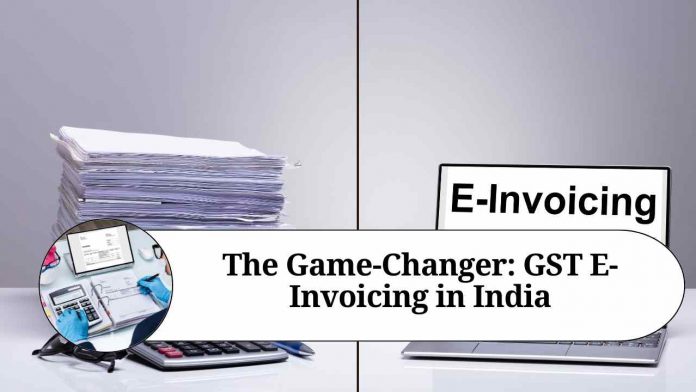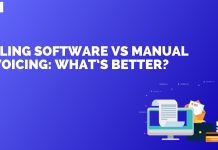Introduction
In an era where technological advancements are transforming the way businesses operate, the introduction of GST e-invoicing in India has emerged as a game-changer. The Goods and Services Tax (GST) Council implemented e-invoicing as a measure to streamline the invoicing process, enhance tax compliance, and reduce tax evasion. With its implementation, businesses across the country have witnessed a paradigm shift in their invoicing practices, paving the way for greater efficiency and transparency. In this blog post, we will delve into the world of GST e-invoicing and explore its significance for businesses in India.
What is GST E-Invoicing?
GST e-invoicing is a digital method of generating and authenticating invoices in a standardized electronic format. It involves the real-time reporting of invoice details to the GST portal, enabling automatic data reconciliation and seamless integration with the GST Network (GSTN). Under the e-invoicing system, businesses are required to generate invoices using a specified format called the JSON (JavaScript Object Notation) format. These invoices are digitally signed and uploaded to the GSTN, where they are validated and assigned a unique Invoice Reference Number (IRN) and Quick Response (QR) code.
Benefits of GST E-Invoicing:
2.1. Improved Tax Compliance: GST e-invoicing minimizes the chances of errors and discrepancies, reducing the scope for tax evasion and fraud. It ensures accurate reporting of invoice data, enabling better compliance with GST regulations.
2.2. Enhanced Efficiency: E-invoicing eliminates the need for manual data entry, saving time and effort for businesses. It enables seamless integration with accounting systems, automating various processes such as invoice generation, inventory management, and tax calculations.
2.3. Faster Input Tax Credit (ITC) Reconciliation: E-invoicing facilitates real-time reporting of invoices to the GSTN, allowing for faster reconciliation of input tax credits. This ensures that businesses can claim ITC in a timely manner, improving their cash flow.
2.4. Reduced Paperwork and Cost Savings: E-invoicing eliminates the need for physical paperwork, reducing printing and storage costs. It also reduces the administrative burden associated with manual invoice processing.
2.5. Enhanced Transparency: GST e-invoicing promotes transparency in business transactions by providing a standardized format for invoice reporting. It enables tax authorities to monitor transactions in real-time, deterring tax evasion and promoting fair practices.
Applicability and Compliance:
GST e-invoicing is applicable to businesses with an annual turnover exceeding Rs. 50 crore. Such businesses are mandated to generate e-invoices for all B2B transactions and export invoices. However, smaller businesses can voluntarily adopt e-invoicing to benefit from its advantages.
To comply with e-invoicing requirements, businesses need to integrate their invoicing systems with the GSTN using Application Programming Interfaces (APIs). They must generate invoices in the prescribed JSON format, upload them to the GSTN, and ensure the inclusion of the assigned IRN and QR code on the invoices.
Challenges and the Way Forward:
While GST e-invoicing has revolutionized the invoicing landscape in India, its implementation did pose certain challenges for businesses. Initial adaptation and integration costs, upskilling employees, and ensuring compatibility with various accounting software were among the hurdles faced.
However, with time, businesses have embraced e-invoicing as a necessary step towards modernization. The government has also been proactive in addressing concerns and introducing simplifications in the e-invoicing process.
Read more useful content:
Frequently Asked Questions (FAQs)
Q. What is GST e-invoicing?
GST e-invoicing is a digital method of generating and authenticating invoices in a standardized electronic format. It involves the real-time reporting of invoice details to the GST portal, enabling automatic data reconciliation and seamless integration with the GST Network (GSTN).
Q. Which businesses are required to implement GST e-invoicing?
As per the current regulations, businesses with an annual turnover exceeding Rs. 50 crore are mandated to generate e-invoices for all B2B transactions and export invoices. However, smaller businesses can voluntarily adopt e-invoicing to benefit from its advantages.
Q. How does GST e-invoicing benefit businesses?
GST e-invoicing offers several benefits to businesses, including improved tax compliance, enhanced efficiency, faster input tax credit (ITC) reconciliation, reduced paperwork and cost savings, and enhanced transparency in business transactions.
Q. How does the e-invoicing process work?
Under the e-invoicing system, businesses need to generate invoices using the specified JSON format and upload them to the GSTN. The invoices are then validated, and a unique Invoice Reference Number (IRN) and Quick Response (QR) code are assigned. The IRN and QR code must be included on the invoices.
Q. What is the role of technology in implementing GST e-invoicing?
Technology plays a crucial role in implementing GST e-invoicing. Businesses need to integrate their invoicing systems with the GSTN using Application Programming Interfaces (APIs). This integration allows for seamless transmission of invoice data to the GSTN and enables automatic reconciliation and compliance.
Q. How can businesses ensure compliance with e-invoicing requirements?
To comply with e-invoicing requirements, businesses should ensure that their invoicing systems are capable of generating invoices in the prescribed JSON format. They need to integrate their systems with the GSTN, generate and upload e-invoices, and include the assigned IRN and QR code on the invoices.
Q. Are there any penalties for non-compliance with GST e-invoicing?
Yes, non-compliance with GST e-invoicing can attract penalties under the GST laws. The specific penalties vary depending on the nature and severity of the non-compliance.
Q. Can businesses use accounting software to generate e-invoices?
Yes, businesses can leverage accounting software that is compatible with GST e-invoicing requirements to generate e-invoices. Many accounting software providers have updated their systems to incorporate the necessary features for e-invoicing compliance.
Q. Is there any relaxation or support available for businesses transitioning to e-invoicing?
The government has introduced various measures to support businesses transitioning to e-invoicing. They have provided extensions for compliance deadlines, conducted awareness campaigns, and offered technical guidance through webinars and helpdesks.
Q. What are the future prospects of GST e-invoicing in India?
GST e-invoicing is expected to continue evolving and becoming more streamlined in the coming years. The government aims to enhance the e-invoicing system’s capabilities and promote its adoption by businesses of all sizes, further improving tax compliance and efficiency in the invoicing process.




















